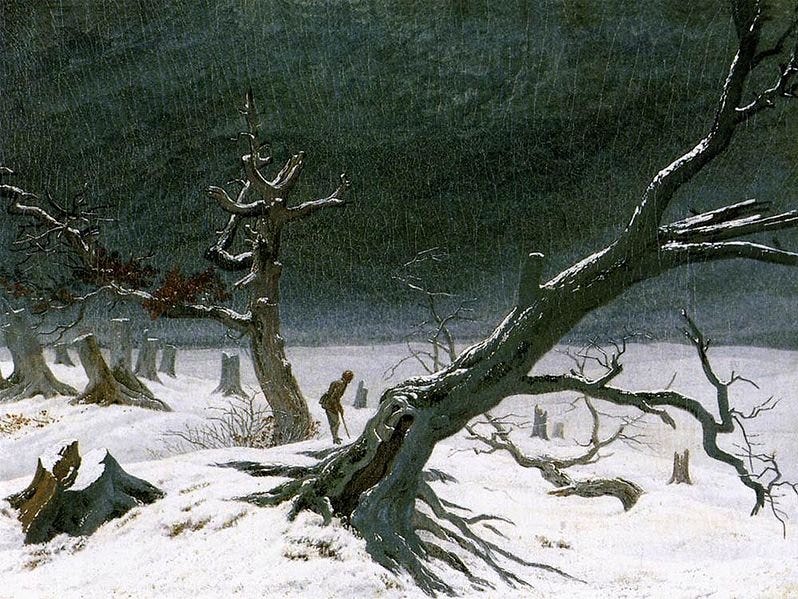The dark is rising and the mythographic potential of power cuts
On folk horror in its medieval and 1970s contexts, winters of horror and discontent, and what it feels like to touch light and watch it die
I read The Dark Is Rising for the first time this year, just as autumn was tipping over into winter and the eighth draft of my PhD research proposals on folk horror and landscape melted exhaustingly into the ninth draft, and then the tenth draft. I waited until I was 28 to read it because my mum told me she thought I’d really like the book when I was about ten. She tried really hard to explain how much she’d loved it and how much it had in common with the Holly Black books I was obsessed with, but I said, ‘Jesus Christ, mum, stop telling me what to feel or enjoy, I don’t like all your old books.’ Of course now I know she was right, and I’m sorry. Sorry Mum. This is one of the best books I’ve ever read for all the reasons you said it would be.
So when I read Susan Cooper’s odd, timeless, wintry story about discovering a stranger, older world flickering behind this one, I couldn’t help but think about how my mum had read this in the 70s. I tried to reconstruct the experiences she wanted to share with me back in the early noughties. I messaged her and asked her to remind me about her reading it, what it meant to her, and how she originally described it to me back when I wasn’t prepared to listen. She described walking with the book in her hand and willing herself to believe it was all real, doing what today’s girlies would call ‘manifesting’, trying to believe she could be an Old One so hard the world around her would melt away and she would see all the more ancient and real things going on behind it.
I read the book and, of course, I loved it because mums are always right. The book asks us to juggle multiple time periods together, seeing both the busy kitchen of Will Stanton’s 1970s family Christmas and the flickering lamplit world behind it, the one only he can see at the same time, as he sees it when everything ‘real’ burns away. As a medievalist, I read it with the Middle Ages strongly in my mind. Susan Cooper studied medieval literature at Oxford under J. R. R. Tolkien, and you can see the influence clearly. Middle English otherworld poems announce themselves clearly in the passage between eerie lamplit worlds and the dimensions that exist within and inside each other.
I loved the book’s medievalism (though I have to deduct some points for being very mean about the ‘Dark Ages’) but more than anywhere else, I was transported to the seventies. My mum told me about her reading the book in the bedroom she shared with her little sister, the one where they earnestly believed a dalek lived in their wardrobe. This was a world where you could read a book called The Dark Is Rising and not know whether you’d finish the book by electric light or candlelight because of the power cuts. Much like medieval otherworlds, this is a very ‘other’ world for me to imagine. I am a child of the internet who scrolls on TikTok while I brush my teeth, so the idea of a government-mandated power cut is an odd and worrying historical fact for me. I had to learn about the mining strikes and raw material shortages that led to the power going out through articles like this one, like something hard to explain from the distant past, like the dark ages.



